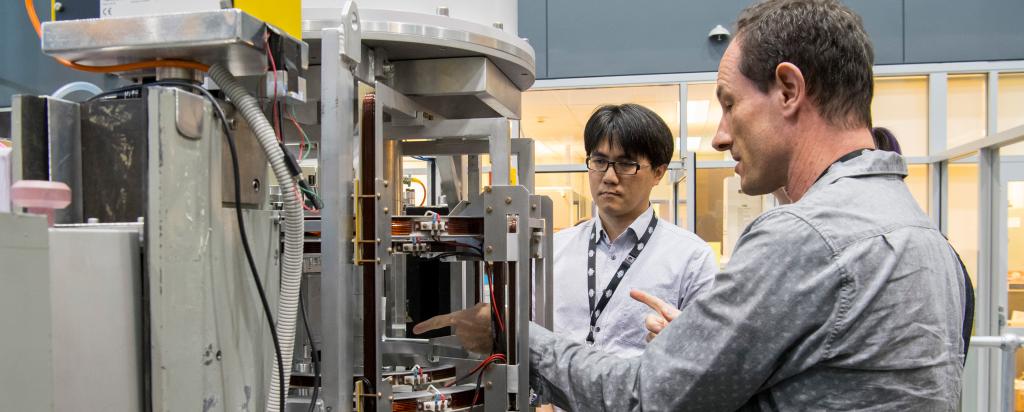| Instrument | Specifications |
| Monochromator | - Wavelength range 1-3 10-10 m
- Variable monochromator take-off angle between 90o and 140o
- Ge 335 monochromator with vertical [1 -1 0] allowing for hhl reflections
- - 23 crystals of 12 mm high x 50-70 mm wide x 8mm thick
- - variable vertical focusing between flat and curvature radius of 1 m
- - typically used reflections 331, 335, 337
|
| Primary Collimator | - Selection of three options: 5', 10', open (~12-36' depending on the wavelength).
|
| Secondary Collimator | - 10' or natural divergence (~20-40' depending on the selected reflection).
|
| Sample area | - Max. beam size is 20 mm wide by 50 mm high
- Sample rotation of 360o
- X-y stage with 20 mm travel in each direction.
- Sample cross tilt stage of +/- 20°
|
| Detector | - 128 linear position sensitive detectors of 25 mm diameter x 300 mm high
- 128 collimators with 5' collimation and 15mm wide and 300mm high
|
| Typical Scan Time | - 1-6 hours (2.5 hours long-term average) depending on sample composition and size and selected instrument configuration
|
Instrument location: Neutron Guide Hall, thermal guide TG-1
Instrument reference
Avdeev, M., & Hester, J. R. (2018). ECHIDNA: a decade of high‐resolution neutron powder diffraction at OPAL. Journal of Applied Crystallography, 51(6), 1597-1604.
